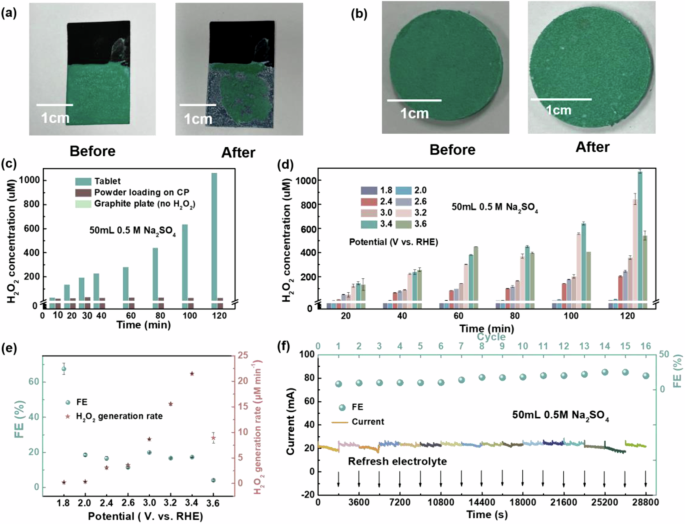Innovative Electrolysis for Hydrogen Peroxide Generation in Environmentally Friendly Way
Key Ideas
- Electrocatalytic synthesis offers a safe and efficient alternative for hydrogen peroxide production, reducing energy waste and infrastructure needs.
- Bicarbonate-based electrolytes play a crucial role in H2O2 generation but face challenges like low efficiency and pH constraints.
- Maintaining a non-carbonate environment is vital for enhanced hydrogen peroxide efficiency in various applications, especially in environmental remediation.
- Research is ongoing to explore innovative electrolysis methods like percarbonate generation to improve H2O2 yields and address current limitations.
Hydrogen peroxide (H2O2) has gained attention in various fields due to its potential in green energy applications. The traditional methods of synthesizing H2O2 have drawbacks such as safety risks, energy waste, and purification needs. Electrochemical methods for in-situ production of H2O2, particularly through electrocatalysis, offer a promising alternative with benefits like safe operation, on-demand production, and the use of inexpensive raw materials. Two pathways, two-electron cathode oxygen reduction reaction (2e− ORR) and two-electron anodic water oxidation reaction (2e− WOR), can achieve electrocatalytic synthesis of H2O2. While the 2e− ORR pathway is widely studied, the 2e− WOR pathway stands out for not requiring oxygen gas and being suitable for oxygen-deficient environments.
Bicarbonate-based electrolytes have been instrumental in H2O2 electro-synthesis, but they face challenges such as low efficiency and pH constraints. Research has shown that bicarbonate can consume H2O2 molecules, leading to reduced generation efficiency. Maintaining a non-carbonate environment is crucial for enhanced H2O2 efficiency in applications like environmental remediation, where an acidic to neutral pH range is often required.
Innovative electrolysis methods, such as percarbonate generation, are being explored to overcome current limitations in H2O2 generation. Researchers have investigated various materials and electrolytes to improve H2O2 yields, with ongoing efforts to develop sustainable technologies for efficient and environmentally friendly hydrogen peroxide production. By addressing the challenges associated with electrolytes and pH control, the future of H2O2 synthesis looks promising for a range of applications in energy, environmental, and industrial sectors.
Topics
Production
Green Energy
Sustainable Technology
Electrolytes
Water Oxidation
Environmental Remediation
Electrocatalytic Synthesis
Acidic Degradation
Anode Material
Latest News
